Choosing the right roof tiles is crucial for the protection and aesthetic of your home. But with so many options, how do you decide? In this guide, we detail the different types of roof tiles available, from classic clay to innovative solar options, which will help you select the best fit based on durability, cost, and style for your roof.
Whether you’re doing a roof restoration, a full roof replacement or building from scratch, understanding these choices is key to a successful roofing project.
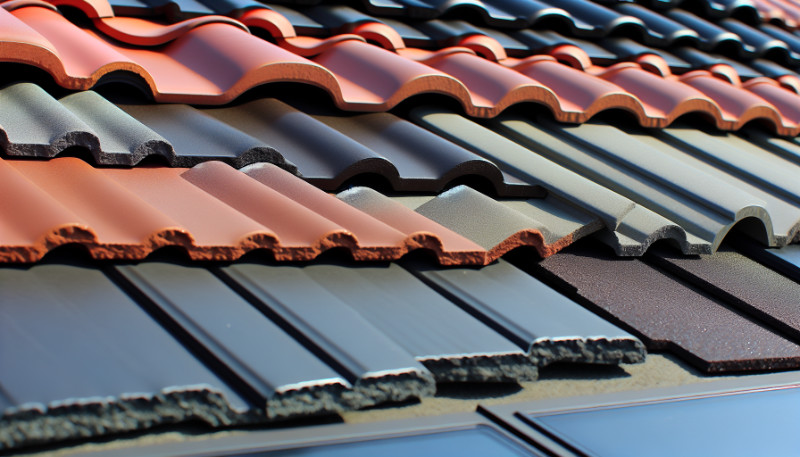
Exploring the Range of Roof Tiles
Roof tiles have evolved significantly from their inception, originally crafted from baked clay by ancient civilizations such as the Greeks, Romans, and Egyptians.
Today, there is a vast array of roof tile types and options available, offering unique advantages and aesthetics. These range from traditional clay tiles, which exude a timeless allure, to durable concrete ones, synthetic tiles and even innovative solar tiles. Each type possesses distinctive qualities worth exploring.
When selecting roof tiles for your home, it is essential to consider more than just their appearance or cost. Other factors, such as the local climate conditions, the architectural style of your house, and the building codes in your area, should also be taken into account.
By carefully considering all these elements, you can find the perfect match to not only enhance the look of your property but also ensure its practicality and functionality.
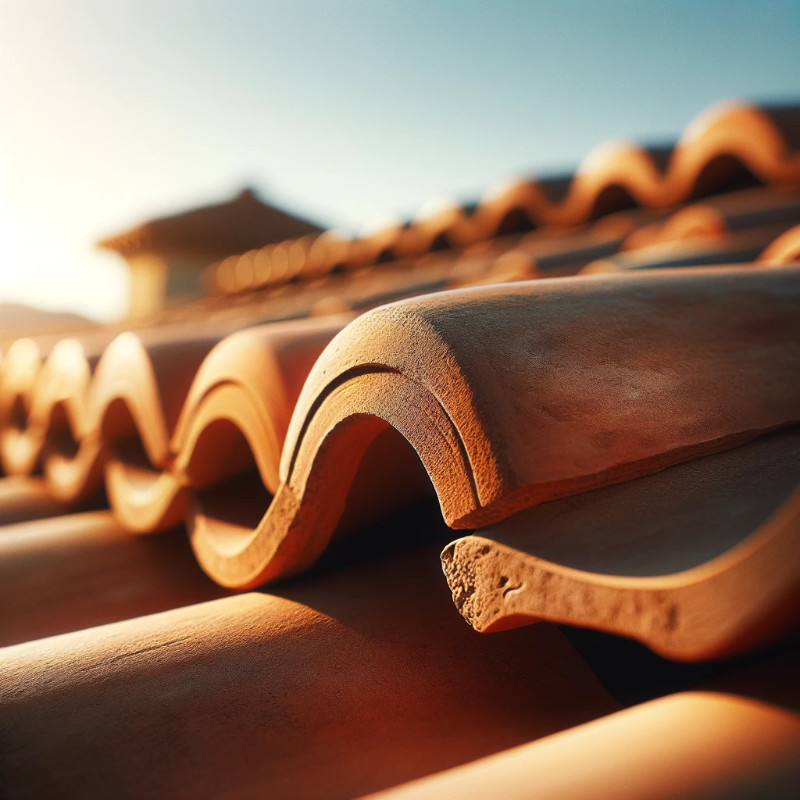
Clay Roof Tiles
For centuries, clay roofing tiles have been a popular choice for homeowners due to their timeless charm and enduring elegance. Beyond their visual appeal, clay roof tiles offer impressive strength and exceptional resistance to water damage, thanks to their low moisture absorption rate. This characteristic renders them impervious to heavy rain, mould growth, and insect infestations. Additionally, their resilience against rusting, decaying, and fire contributes to an extended lifespan, with some tiles lasting over a century with proper maintenance.
The manufacturing process of clay roof tiles involves shaping natural clays into desired forms and then firing them at high temperatures. This process results in robust tile pieces capable of withstanding severe weather conditions, from extreme heat to frost, thereby ensuring durability for up to 150 years. Furthermore, clay tiles are categorized based on their grade for durability and appearance, with the different types of roof being designed to offer resistance to varying degrees of frost action.
Clay roofing tiles are not only extremely durable but also energy efficient. They possess a natural ability to regulate the temperature of your home by absorbing heat during the day and releasing it at night. This feature can lead to lower energy bills and increased comfort throughout the year. Moreover, the high solar reflectance index and thermal emittance of clay roof tile tiles reduce heat transfer, effectively keeping interiors cooler and reducing the need for air conditioning.
Aesthetically, clay roof tiles are available in a variety of colours, styles, and finishes, allowing them to complement a wide range of architectural designs, from traditional Mediterranean or Spanish styles to modern and contemporary looks. This versatility enhances any home’s exterior effortlessly.
In terms of sustainability, clay roof tiles stand out as an environmentally friendly choice. They are made from natural materials, do not release harmful chemicals into the environment, and are 100% recyclable. The by-products obtained during their manufacturing process are also recycled, minimizing their environmental impact.
When selecting clay roof tiles for your home, consider their long lifespan, energy efficiency, aesthetic versatility, and environmental benefits. These factors, combined with their resistance to extreme weather conditions and low maintenance requirements, make clay roof tiles a superior roofing solution that enhances the appearance and functionality of any property.
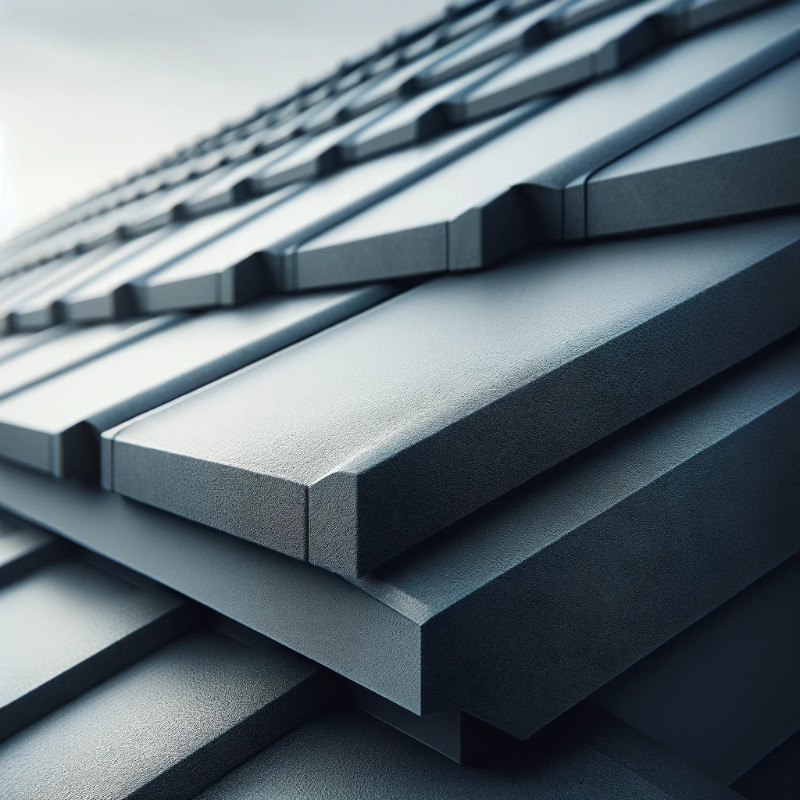
Concrete Roof Tiles
If you’re considering a durable and affordable roofing solution, concrete roof tiles present an appealing choice for your home. Fabricated from a blend of sand, cement natural stone, water, and colour pigments, these tiles offer durability at an economical price point, with various colours and profiles to match different architectural styles.
Concrete roof tiles are celebrated for their long lifespan, often ranging between 50 to 70 years, making them a cost-effective option over time. They are known for their resilience against high winds, heavy rain, and other extreme weather conditions, ensuring excellent long-term performance. Additionally, concrete roof tiles are relatively low maintenance, requiring minimal upkeep aside from periodic cleaning to prevent moss or algae build-up.
A notable benefit of concrete tiles is their energy efficiency. The heavy thermal mass of the various concrete roof tiles helps to regulate indoor temperatures, keeping your home cooler in the summer and warmer in the winter, potentially reducing heating and cooling costs. Moreover, they are an eco-friendly roofing option, made from natural materials that are 100% recyclable, thus contributing to environmental sustainability.
However, there are considerations to keep in mind. Concrete tiles are heavier than many other roofing materials, which may necessitate structural reinforcements to your roof. Additionally, while they are more affordable than traditional tiles, concrete tiles still represent a higher initial investment compared to options like asphalt shingles. Their versatility in styles raw materials and colours allows them to complement almost any architectural design, with modern manufacturing techniques enabling them to mimic the appearance of slate and clay tiles.
Concrete roof tiles offer a blend of durability, aesthetic flexibility, and energy efficiency, making them an attractive choice for homeowners looking for a long-lasting and environmentally friendly roofing solution. With proper installation and minimal maintenance, they can enhance the curb appeal and functionality of your home for decades.

Slate Roof Tiles
Slate roof tiles are renowned for their timeless elegance and exceptional durability, offering a lifespan that ranges from 75 to over 200 years with appropriate maintenance. These tiles are made from natural stone, giving each piece a unique colour and texture. Their heavy weight, averaging 0.7kg per tile, contributes to their resilience against harsh weather conditions, including wind, fire, and water, making them one of the most durable roofing materials available.
However, the significant weight of slate tiles necessitates additional structural support for your home, which could increase the installation costs. Despite the higher upfront expenses compared to other roofing options, slate’s durability, and low maintenance requirements make it a cost-effective choice over time. The costs for installing a slate roof on a 1,500-square-foot home can vary widely, ranging from $7,500 for synthetic slate to $45,000 for natural slate, with the average cost around $30,000. The price is influenced by factors such as the type of slate, roof size, and labour.
Maintenance of a slate roof primarily involves regular inspections to identify and replace any broken tiles and address faulty flashing. Both hard and soft slate types have their maintenance specifics, with hard, slate roofs being more salvageable upon tile breakage and soft slate more prone to requiring a new roof when cracks appear.
While natural slate is more costly and heavier, leading to potential additional installation costs, synthetic slate offers a lighter and less expensive alternative. However, synthetic slates do not match the lifespan of natural slate. Natural slate is highly praised for its sustainability, being both fireproof and environmentally friendly, as well as for its aesthetic versatility, available in various colours and styles to suit different architectural designs.
While the initial investment for a slate roof may be higher, its longevity, aesthetic appeal, and minimal maintenance requirements contribute to its status as a premium roofing choice. Homeowners considering slate should weigh these benefits against the installation complexities and costs to determine if it’s the right option for their homes.
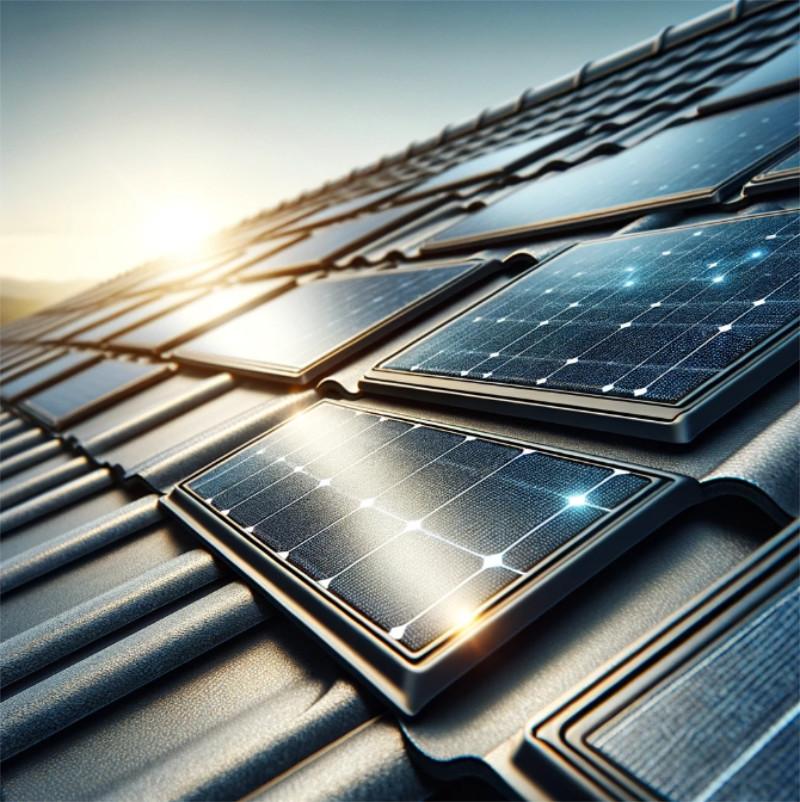
Solar Roof Tiles
In the push towards renewable energy and sustainable living, solar roofing tiles represent a cutting-edge and environmentally friendly roofing alternative. These innovative tiles not only serve the primary function of protecting your home from the elements but also double as a source of renewable energy by converting sunlight into electricity. There are two main varieties of this solar solution: solar shingles and solar tiles, both engineered for efficient solar energy production.
The initial investment in solar roof tiles might be higher than that of traditional roofing materials; however, the long-term energy savings of best roof tiles can substantially mitigate the initial cost, positioning them as an economically viable option over time. Their ability to decrease greenhouse gas emissions further underscores their appeal to environmentally conscious homeowners looking to lessen their carbon footprint.
Solar roof tiles blend seamlessly with your home’s aesthetic, offering a more visually appealing alternative to traditional solar panels. Despite their higher upfront cost compared to conventional photovoltaic systems, solar roof tiles promise considerable long-term savings on electricity bills. They are particularly suitable for new constructions or major renovations, allowing homeowners to integrate solar power generation directly into the roofing material, thereby saving on construction materials and costs.
Durability is another hallmark of solar roof tiles; they are made with tempered glass, making them robust and long-lasting. They also offer versatility in installation, capable of being installed on roofs that might not accommodate traditional solar panel setups due to space constraints or complex shapes.
Choosing between solar roof tiles and traditional solar panels involves considering aesthetics, efficiency, installation requirements, and cost. While solar roof tiles provide an integrated, sleek look and are becoming more efficient with technological advancements, traditional solar panels currently offer higher efficiency and a lower cost per watt of generated power.
Solar roofing tiles present a forward-thinking solution for those seeking to combine renewable energy generation with stylish, durable roofing. By weighing the benefits against the costs and considering the long-term environmental and financial savings, homeowners can make an informed decision on whether solar roofing tiles are the right choice for their energy needs and sustainability goals.
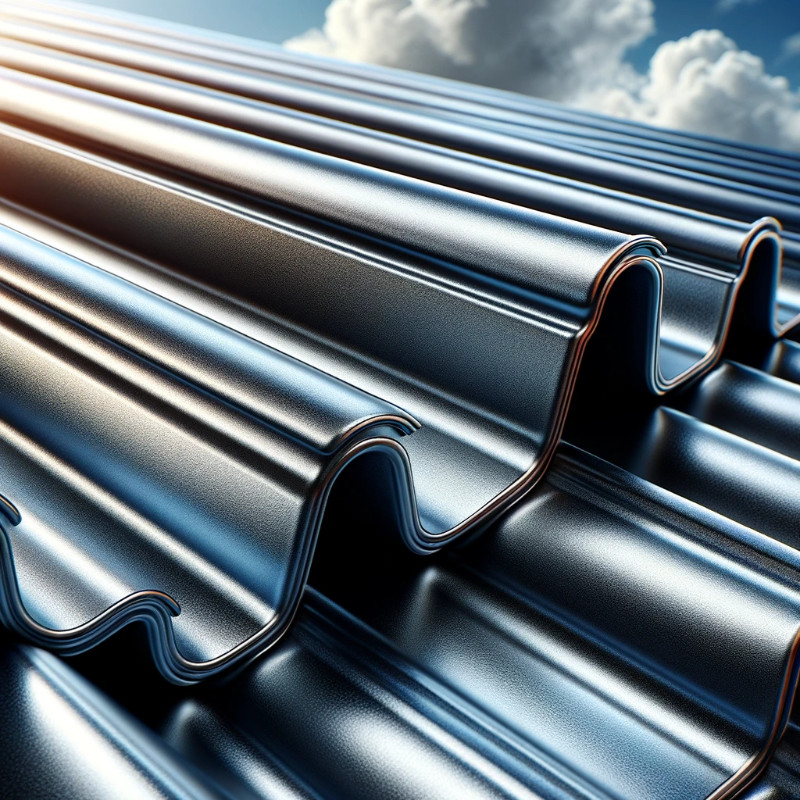
Metal Roof Tiles
In the landscape of sustainable and durable roofing options, metal roof tiles stand out as a robust and eco-friendly solution. These tiles, known for their longevity and resilience, are designed to provide a roof requires superior protection against the elements while contributing to a home’s energy efficiency.
Metal roof tiles come in a variety of styles and materials, including aluminum, steel, copper, and zinc, offering homeowners the flexibility to choose tiles that best suit their home’s architectural style and environmental conditions. Not only do they mimic the appearance of traditional roofing materials like clay, slate, or wood, but they also provide the added benefits of metal roofing, such as enhanced durability and fire resistance.
The initial cost of metal roof tiles may be higher than some traditional roofing materials, but their long-term benefits justify the investment. Metal tiles are known for their exceptional lifespan, often lasting 50 years or more with minimal maintenance, making them a cost-effective choice over time. Additionally, their energy-efficient properties can lead to significant savings on heating and cooling costs, as metal tiles on roofs reflect solar radiant heat instead of absorbing it.
Installation of metal roof tiles requires expertise to ensure that the tiles are properly secured and sealed to prevent leaks and maximize their lifespan. Despite the need for professional installation, the process is generally faster and less disruptive than that of traditional tile roofing, thanks to the lightweight nature of metal sheeting tiles and the interlocking systems used to install them.
Environmentally conscious homeowners will appreciate that metal roof tiles are often made from recycled materials and are fully recyclable at the end of their life, contributing to a reduced environmental footprint. Furthermore, the fire-resistant properties of metal tiles offer an added layer of safety, making them a wise choice in areas prone to wildfires.
In conclusion, metal roof tiles present a forward-thinking roofing solution that marries aesthetic appeal with practical benefits. Their durability, energy efficiency, and environmental sustainability make them an attractive option for homeowners looking to invest in a long-lasting and eco-friendly roof. By carefully considering the variety of metal roof tile options available and consulting with professional installers, homeowners can enhance the value and performance of their homes with metal roof tiles.
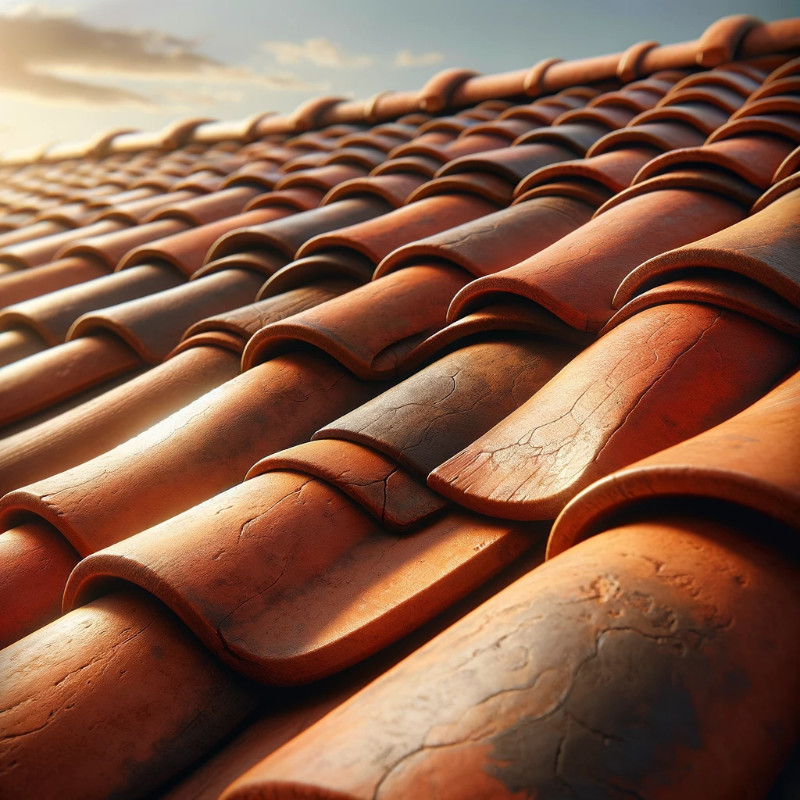
Terracotta Roof Tiles
Terracotta roof tiles, crafted from fired clay, are celebrated for their durability and aesthetic appeal, often lasting between 50 to 100 years or more under proper conditions. These tiles are known for their distinctive orange or reddish-brown color, contributing to a rustic and timeless look suitable for various architectural styles. As a result, terracotta tiles not only enhance the curb appeal of homes but also offer practical benefits.
The robust nature of terracotta makes these tiles weather-resistant, capable of withstanding extreme conditions like hail, heavy rain, and high winds, along with a Class A fire rating, rendering them ideal for areas prone to wildfires. Additionally, their dense structure and layering provide natural insulation, contributing to energy efficiency by maintaining comfortable indoor temperatures and reducing energy costs.
In terms of maintenance, terracotta tiles are relatively low-maintenance compared to other materials. They do not require frequent painting or sealing and are resistant to rot and insect damage. Their eco-friendly nature, being made from natural clay and recyclable, further adds to their appeal.
However, there are some drawbacks to consider. The initial cost of terracotta roofing can be higher than other options such as asphalt shingles, including both the materials and installation, which is labor-intensive. The weight of terracotta tiles is another factor, as they may require additional structural reinforcement, adding to the overall cost.
Despite their durability, these tiles can be brittle and susceptible to cracking under heavy impacts, necessitating careful handling during installation and maintenance. The complexity of installation and potential for color fading over time due to sunlight exposure are other considerations. Furthermore, terracotta tiles may not be suitable for very cold climates due to the risk of cracking in freeze-thaw cycles.
In summary, while terracotta roof tiles offer several benefits in terms of durability, aesthetic appeal, and energy efficiency, it’s important to weigh these against factors like cost, weight, installation complexity, and climate suitability to determine if they are the right choice for your home.
Matching Roof Tiles to Your Home’s Pitch
When selecting roof tiles, the pitch or angle of your home’s roof plays a critical role in determining their suitability. The a concrete roof tile’s pitch directly influences the tiles’ ability to endure various weather conditions, including rain, snow, and wind. Generally, a concrete roof tile with a steeper pitch offers enhanced protection from the elements. It’s also important to note that installing tiles on a higher pitched roof may demand additional labour and specialized equipment, potentially leading to increased installation costs.
Beyond weather resistance and cost, it’s essential to consider the aesthetic impact on your home. The selection of roofing materials should not only meet functional needs but also complement your home’s architectural style and the local climate, thereby enhancing its curb appeal. Whether your roof has a steep slope or a gentle incline, there are suitable tile options locally available materials that fulfil both practical and aesthetic requirements. These options include a variety of tile styles and colours that can harmonize with your house’s design and the surrounding environment, ensuring that your home looks as good as it is protected.
Calculating Your Needs: Quantity and Budgeting
Once you have chosen the type of roof tiles suitable for your home and considered its slope, the next step is to determine how many tiles are needed. The size and roof pitch amount of your roof will play a significant role in this calculation as it affects the length required from ridge to fascia. To accurately estimate, online calculators can provide precise measurements for an exact count.
To figure out the quantity of tiles, budgeting is a crucial aspect when selecting different, concrete roofing tiles, tile types and options. It’s important to keep in mind that installing these materials can cost anywhere between $85-$155 per square meter on average with total expenses ranging from $8,000 up to $90,000 depending on factors such as size and style of roofing system. Having a well-defined budget not only helps narrow down choices, but also avoids any unexpected surprises along the way.
Step-by-Step Guide to Roof Installation
Properly installing roof tiles is a detailed and precise undertaking that involves several crucial steps. These include preparing the roof deck, laying down the tiles, and adding final touches to ensure a watertight and durable roof structure throughout. It’s important to be aware of common mistakes such as hiring unlicensed contractors or attempting dangerous DIY work which can compromise the quality of your roof tile replacement installation.
To avoid these pitfalls, it is highly recommended to hire professional roofing contractors who are well-versed in local building codes and have extensive experience with tile roof installations. They will also possess necessary tools for safe handling certain tiles during the process. to see whats involved in this we suggest reading our guide on what’s involved in a tile roof restoration in perth for more information
It cannot be stressed enough how essential proper installation methods are when dealing with roof tiles. Inaccurately diagnosing leaks or mishandling broken tiles can lead to significant issues later on. To guarantee successful outcomes without any risk-taking involved, it’s best left in the hands of professionals specializing in this field.
Also check out – how to clean change a roof tile
Preparing the Roof Deck
The initial stage in installing roof tiles is to prepare the underlying structure of the roof. This involves removing any debris, nails, old shingles or other materials from previous roofs before stripping away all remaining layers. Once cleared, a thorough inspection and assessment of the structural integrity must be done including checking for uneven areas or signs of rot on decking material as well as assessing rafters and joists for damage while measuring their thickness.
Once the deck has been properly cleaned and assessed, underlayment and battens are then installed properly next. The purpose of an underlayment is to provide protection against moisture that may seep through gaps between tiles onto the vulnerable surface below while battens serve to secure each tile firmly in place once laid down accurately by qualified professionals who will ensure robustness during installation process ensuring you get optimal return out of your investment over time.
Laying Down the Tiles
Before installing the clay tiles on the roof deck, proper alignment is crucial to ensure an even installation. It’s important to start at the bottom edge and make sure they align with neighbouring tiles. The spacing between them also impacts durability and weather resistance, so it’s essential to refer to clay roof tile part specifications for correct spacing.
Next comes securing the tiles using nails, screws or special clips depending on metal tiles and their type. For tiled roofs, clay tile roofs specifically, there are several options such other materials such as wire, concrete or metal clips that can prevent movement or damage of the tiles.
After properly aligning and securing all clay roof tiles in place with appropriate spacing between them according to specifications, a final sealing process must be completed. This can involve traditional wet mortar application or a more modern dry fixed system utilizing specialized clips or screws for a secure watertight installation.
Finishing Touches
The last step in the installation process of roof tiles involves completing final details. These include placing ridge tiles, flashing, and ventilation systems. Ridge tiles are essential for sealing the top portion of the roof to prevent water from seeping through and protecting it against external elements. To properly install them, start at the bottom edge of your roof by nailing down a tile over a rafter onto a batten before attaching subsequent ones using clamp unions.
Flashing is another important element that serves as waterproofing protection against potential leaks or holes in roofs caused by precipitation. The way they are installed resembles shingles where they divert rainwater away from seams and joints to maintain dryness on your roofing system.
Once all roofing tiles have been laid out with these finishing touches added on, you can rest assured that your new slate roofing tiles will withstand time’s test while providing reliable protection for many years ahead.
Preserving Your Tiled Roof
Regular upkeep is crucial for maintaining the longevity and functionality of a roof. This includes cleaning out gutters, which not only prevents water build-up that can damage both tiles and the structure beneath, but also extends the lifespan of your entire roof, It also worth cleaning your roof before you paint.
To Enhance its durability, consider using gutter covers to prevent clogs and maintain clean gutters over extended periods. This will protect the tiles on your tiled roof from potential water-related harm. By staying on top of gutter maintenance, you can ensure that your roof remains in optimal condition for many years to come.
Enhancing Aesthetics with Tile Varieties
When deciding on the top choice for roof tiles, it is important to consider both functionality and durability. Aesthetics are also a crucial factor to keep in mind since your roof is highly visible and can greatly enhance the overall appearance of your home. Some possibilities worth considering include Marseille terracotta tiles, Spanish slate options from The Dark Collection, as well as Nulok vitrified ceramic variants.
With such a wide variety right tiles available, you have the flexibility to create a unique look that complements the specific architectural style of your house. If you have Mediterranean-inspired architecture, then terracotta tiles would be ideal while modern designs tend to work best with concrete or slate tile roofs as selections. Traditional looks often benefit from slate options which come in various colours suitable for different types of housing and roof styles too. Whether going for a rustic vibe or aiming at traditional or contemporary appearances, there’s always an option within this vast range of potentialities when selecting high-quality roof tiles.
Customizing with Colour and Texture
Aside from the type and design of roof tiles, their colour and texture can greatly impact the appearance of your home. Considerations such as bold or neutral colours, earthy tones, and light hues can create a vibrant or understated look for your roof. Lighter coloured tiles offer energy efficiency benefits by reducing air temperature in the attic compared to darker options.
Texture is another element that adds visual appeal to roofing materials. It brings dimension and interest to enhance the overall aesthetic of a house. Whether you prefer smooth finishes for a contemporary feel or textured tiles for added character and depth, it’s important to choose colours and textures that complement your home’s architectural style.
Environmental and Energy Considerations
When considering roof tiles, it is important to take into account their environmental impact and energy efficiency. Some types of roof tiles, such as clay tiles or concrete ones, may have a significant effect on the environment during the manufacturing process. These materials are often recyclable and long-lasting, which reduces waste in landfills and minimizes the need for frequent roofing.
Solar roof tiles play a crucial role in promoting sustainability by harnessing sunlight to generate electricity. Not only do they help produce clean renewable energy, but flat tiles also contribute towards reducing greenhouse gas emissions while preserving our planet’s resources for future generations.
Navigating Local Building Codes
Before starting your roof tile installation, it’s essential to familiarize yourself with local building codes and regulations. These guidelines often dictate the type of roofing materials that are allowed, taking into account factors like fire resistance, longevity, and energy efficiency. In countries such as Australia, there are also specific rules about the weight and colour of roof tiles in different climate zones. It is crucial to follow these regulations not only for aesthetic purposes, but also for compliance with legal requirements.
To general standards for roofs, local building codes may contain special provisions aimed at particular circumstances. For instance, hurricane-prone areas may have specific wind-resistant requirements that should be taken into consideration when choosing suitable roof tiles. Thus, it’s important to understand all relevant regulations in order to choose appropriate roofing options for both your home and location.
Summary
When it comes to selecting the perfect roof tiles for your house, there are many factors that should be taken into consideration. These include the type and colour of the tiles, as well as local building regulations and the pitch of your roof. You have a variety of expensive roof tile options available such as traditional clay with its timeless appeal, durable and concrete tiles, elegant and slate roof tiles or even innovative solar panels. You can also go for eco-friendly synthetic slate tiles depending on what suits your needs best.
It’s important to remember that aside from protecting your home against withstand harsh weather conditions and elements like rain or snow, choosing quality roof tiles can enhance dream home in both its appearance and energy efficiency levels while increasing its overall value too! Taking enough time to carefully consider all these aspects is crucial in making a decision you will be satisfied with in years ahead.

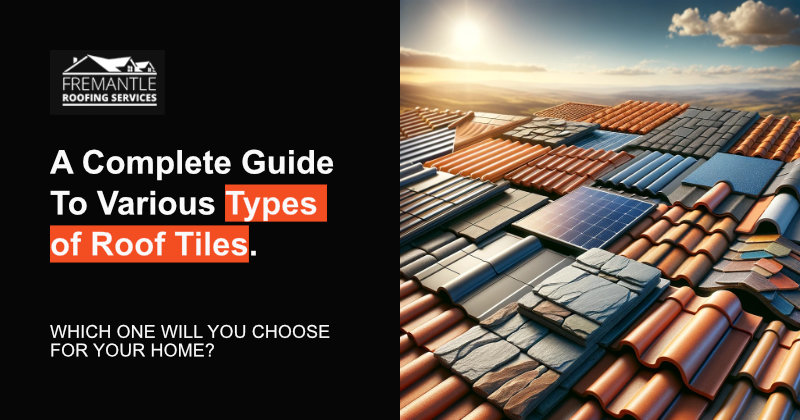
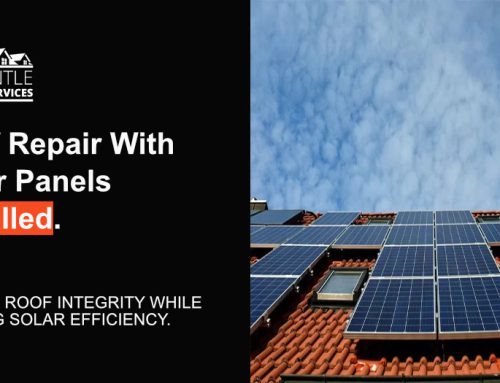
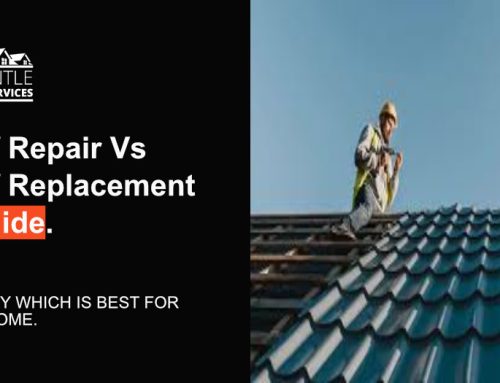
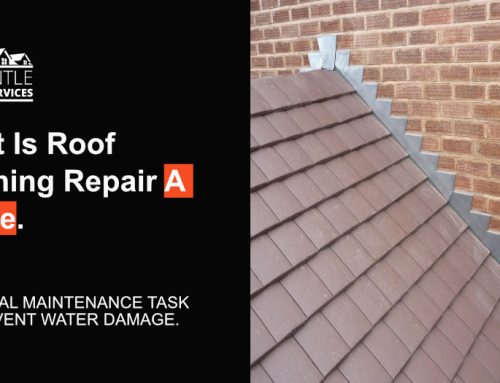

Leave A Comment